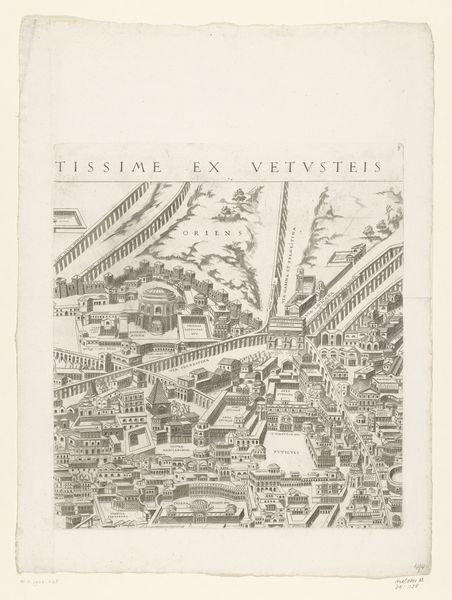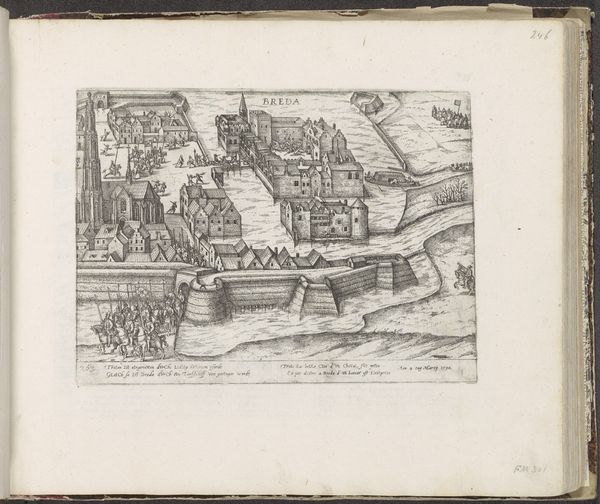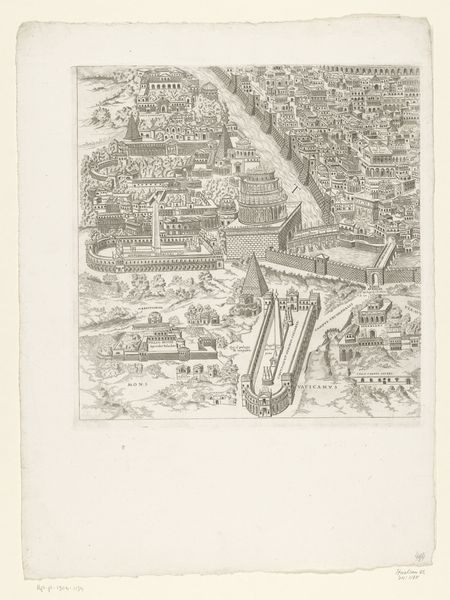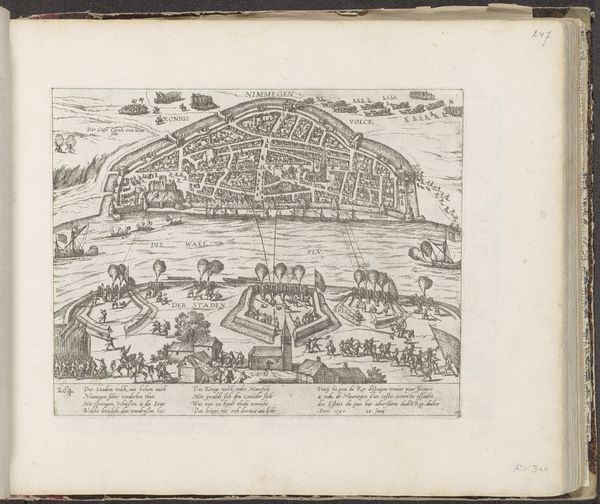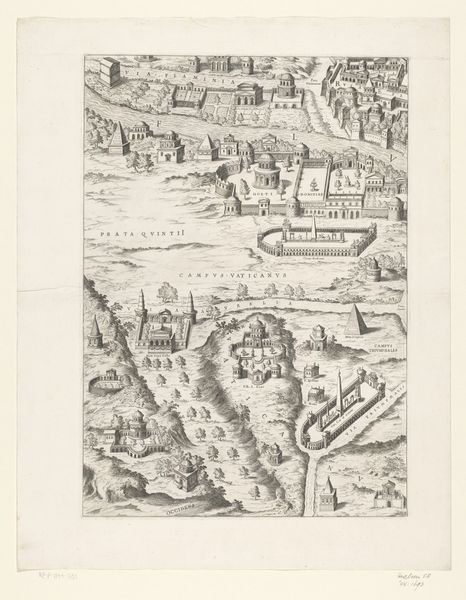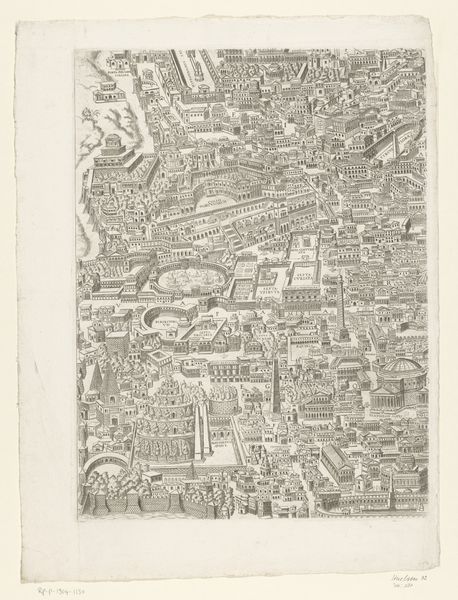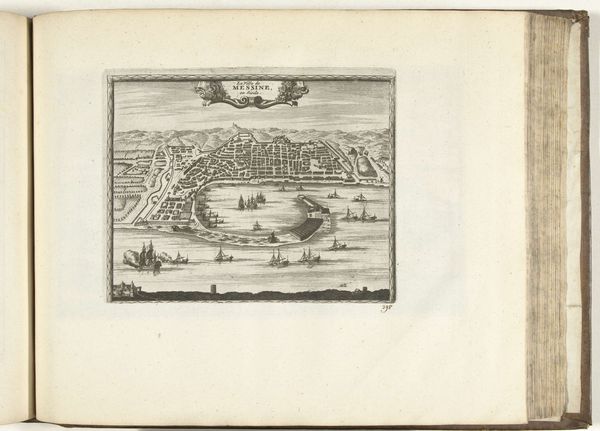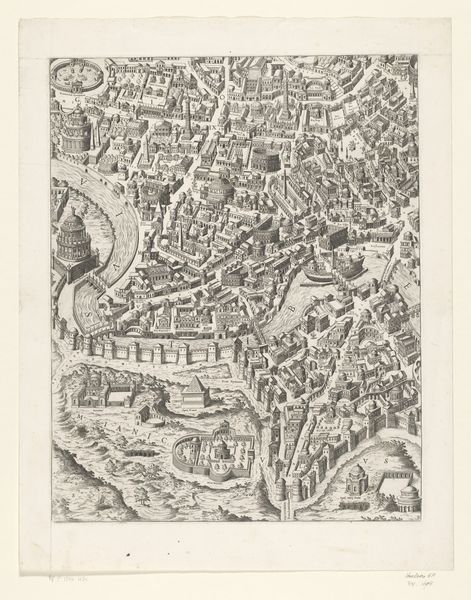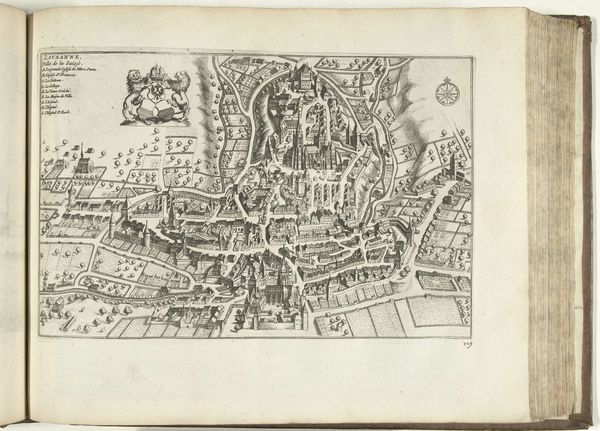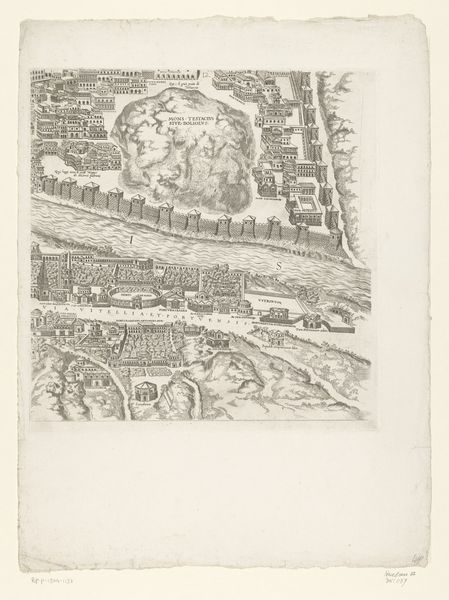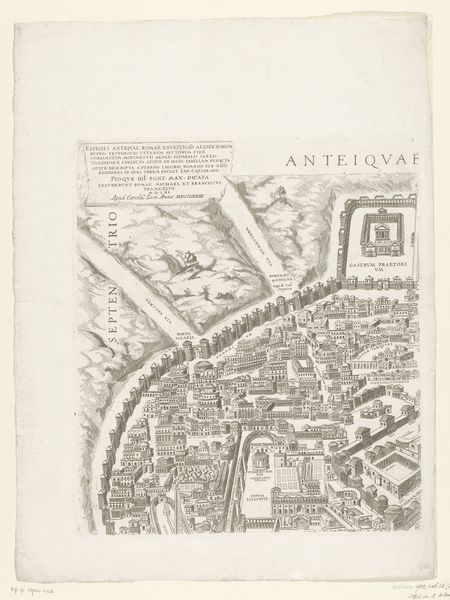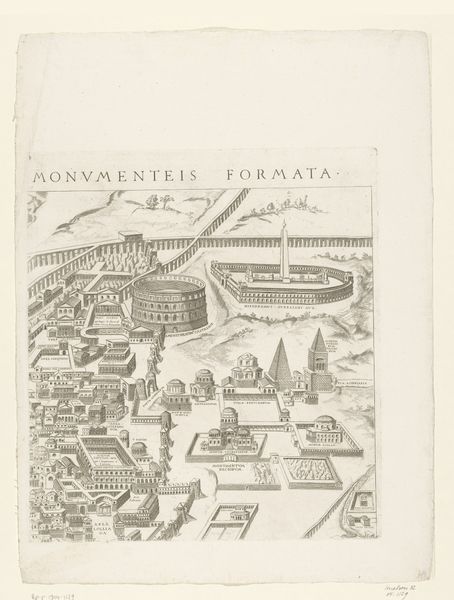
print, ink, engraving
#
neoclacissism
# print
#
ink
#
geometric
#
pen-ink sketch
#
cityscape
#
history-painting
#
engraving
Dimensions: height 412 mm, width 358 mm
Copyright: Rijks Museum: Open Domain
Curator: The work before us is entitled "Plattegrond van Rome in de Romeinse tijd (tweede deel)", a 1773 engraving rendered in ink. Editor: My goodness, that’s incredibly intricate. All those tiny lines – it makes you wonder about the sheer labor involved in creating something this detailed. Almost overwhelming! Curator: Indeed. These detailed maps were tools to build narratives around Roman history, shaping national identity and bolstering political power throughout Europe in the late 18th century. Notice how idealized it appears? Editor: The level of precision certainly implies an intent beyond mere cartography. You can feel the weight of history, but what kind of tools would even achieve these engravings? I am particularly drawn to those repeating geometric patterns, clearly defined within those districts. Curator: The artist utilized engraving to allow for multiple prints, facilitating widespread dissemination. These prints ended up influencing architectural design and urban planning – shaping public spaces long after its creation. Neoclassicism embraced this view of Rome. Editor: That explains why so much emphasis is given to monumentality; and I notice all of the materials being "simulated" by ink - stone, water... each meticulously marked out. A very consuming process. Curator: And let's consider the act of representing the city as a totality, accessible in this scaled-down form. It suggests a particular attitude towards knowledge and power—a desire to possess and control through visual representation. Editor: I'm struck by the implied social hierarchies embedded in this seemingly neutral layout. I wonder, how did labor practices shape the availability of such prints, and whom did this material ultimately serve? Curator: Exactly. The creation of and the access to prints were highly stratified. What seems like a neutral reproduction is in fact steeped in a specific socio-economic context. Editor: Thinking about the engraving process, about how many hours would go into this kind of artmaking – and that is absent when we talk about historical accuracy alone. Curator: It definitely provides a reminder that the way we see and understand history is directly impacted by the artistic, the social, and of course the political circumstances within it was crafted. Editor: Absolutely, a great reminder to really dig beneath the surface, right to the very methods and materials of art production when interpreting our shared histories.
Comments
No comments
Be the first to comment and join the conversation on the ultimate creative platform.

